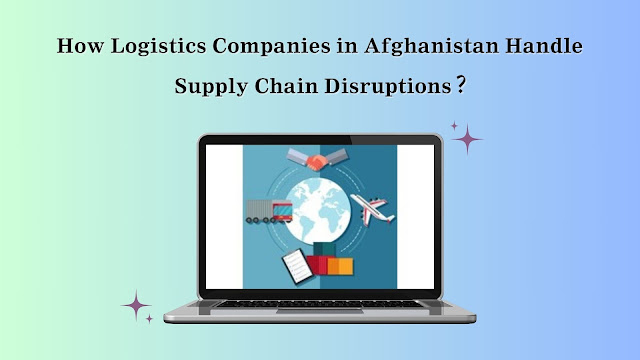How to find the Best Afghan Shipping - Logistan
How to find the Best Afghan Shipping - Logistan
Afghanistan's strategic location and historical significance have made it an essential hub for regional transportation and trade. Despite challenges faced by the country's shipping industry, including political instability and conflict, there is potential for growth and development. Logistan will explore the current state of Afghan Shipping, the challenges it faces, and the potential for future growth.
The Current State of Afghan Shipping
The shipping industry in Afghanistan is currently facing numerous challenges, which have had a significant impact on its growth and development. One of the primary obstacles faced by Afghan Shipping is the country's lack of access to the sea. As a landlocked nation, Afghanistan relies on neighboring countries' ports for its import and export activities.
Moreover, the country's infrastructure, including its road and rail networks, is underdeveloped, further complicating the transportation of goods to and from ports. Security issues such as conflict and terrorism, as well as corruption, have also hampered the industry's growth.
Despite these challenges, the Afghan government has taken steps to support the shipping industry's development. In recent years, the government has invested in infrastructure, including the construction of new roads and railways, to improve the transportation of goods to and from ports. It has also implemented policies to streamline customs procedures, reduce red tape and enhance transparency, and attract foreign investment in the industry.
In addition, several international organizations and governments have provided assistance to the Afghan Shipping industry, such as training programs for customs officials and technical assistance for port infrastructure development.
However, despite these efforts, the industry's growth remains slow due to ongoing challenges. Nonetheless, the potential for growth and development remains high, particularly as Afghanistan's economy continues to expand, and the country's infrastructure improves.
Overall, the current state of Afghan shipping is challenging, with numerous obstacles. Nonetheless, the Afghan government and the international community's efforts to support the industry's growth provide hope for its future potential.
The Future of Afghan Shipping
The future of Afghan shipping holds significant potential for growth and development. The country's location at the crossroads of South and Central Asia, as well as its strategic location along the trade routes connecting Asia and Europe, make it a valuable hub for regional trade and commerce.
The Afghan government has recognized the importance of the shipping industry for the country's economic development and has implemented several initiatives to promote the industry's growth. For instance, it has established the Afghanistan Railway Authority, which aims to expand and modernize the country's rail network.
Despite these positive developments, the future of Afghan Shipping also faces potential obstacles. Security concerns remain a significant challenge, as do corruption and bureaucratic inefficiency. Additionally, the ongoing conflict in Afghanistan and instability in the wider region could hinder the industry's growth.
However, with continued investment in infrastructure and capacity building, coupled with ongoing efforts to improve security and governance, the potential for growth and development in the Afghan shipping industry remains high. The industry could play a significant role in the country's economic development, providing employment opportunities and facilitating regional trade and commerce.
For more details visit our website: Afghan Shipping
Contact: +93 79 444 4493
Address: Shar-e-Now, Haji Yaqoob Square, Kabul, Afghanistan
Email: sales@logistan.com



Comments
Post a Comment